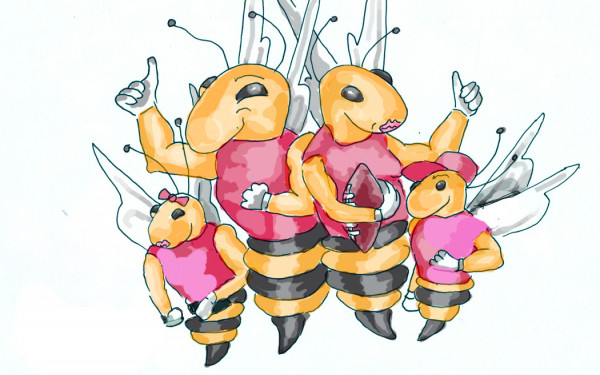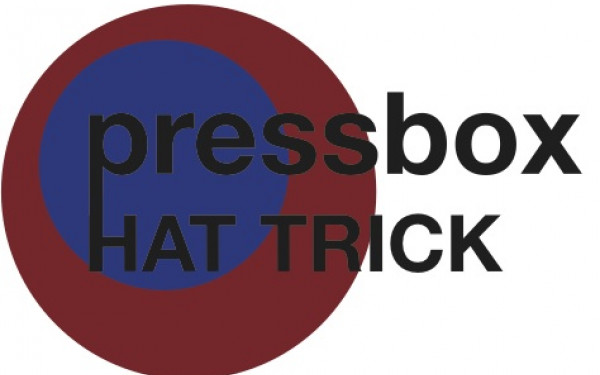Softly Sound
Researching the Science and Intimacy behind YouTube Videos
You’re lying in bed, and someone is reading you a bedtime story, but whispering as they read. The page turns as you nestle yourself under the blankets for a good night’s rest. Or maybe you’re checking into a hotel, and the sound of typing soothes and relaxes you.
These are typical descriptions of the whisper, role-play, and soft-spoken tutorial videos that people use to trigger ASMR, on YouTube.
Autonomous Sensory Meridian Response is a phenomenon that people have been experiencing for years. The tingly sensations, and the feeling of being relaxed are all features associated with ASMR.
Explaining the sensation is difficult, and everyone defines the feeling in a different way. Nichole of the YouTube channel Springbok ASMR mentioned the feeling that one would get from watching Bob Ross on TV. Dr. Craig Richard from ASMR University, describes it as the feeling one gets when just sitting with a loved one and leaning into them.
“I define [ASMR] usually by the sensation, which is a really tingly, relaxing sensation that’s stimulated by calm talking, deliberate movements and attention to detail,” said Nichole.
Its name, however, is relatively new, and the research behind the phenomenon has only just begun.
“It’s fascinating because up until so many years ago we didn’t have a proper name for it,” said Nichole. “A lot of people like myself grew up not even knowing what to call it, let alone conceiving that one day we would have studies.”
One of the biggest proponents of research in ASMR is Craig Richard, a professor at Shenandoah University. He created the website called ASMR University, which is a resource center for those who want to research ASMR. Richard also does research of his own. On the website there is a survey which currently has 16,000 total responses.
“The strong majority of people are agreeing that ASMR is a relaxing feeling,” said Richard. “They feel tingles, it helps them to fall asleep, and it helps to feel more relaxed, less stressed.”
What Richard’s survey has found is that people are confirming that ASMR is making them feel better, and some are even saying that it helps with mental health diagnoses.
While there is anecdotal evidence, Richard cautions that a lot more research needs to be done before claiming that AMSR can help someone’s mental health, as even the survey can not tell how strongly it helps.
“I’m hoping that the long term play here is initially to show that is has an effect on people and then that there’s therapeutic potential,” Richard said. “Because people are reporting in our survey that if they have depression, insomnia, or anxiety, that ASMR helps them to deal with that.”
Nichole shares the same opinion. She wants to promote it as something effective, as she has received countless messages from her viewers claiming to be helped, but also cautions that ASMR is not a complete replacement to taking care of oneself.
“I strongly believe that it can be very, very helped, especially when it comes to things like addiction, and things like depression,” she said.
While ASMR artists on YouTube gather tons of views, it still only has a niche following. Therefore, not everyone knows or wants to study ASMR as actual science. Many dismiss ASMR as a pseudoscience, as there aren’t many studies on the topic — and the ones that are actually out there are mostly surveys on what people experience when they watch these type of videos.
Joceline Andersen, a former McGill student, found in her research that a lot of videos are role-plays, usually of someone in medical field where they can inspect something near your head, thus getting the ability for close up whispers. It creates an intimate environment—a lot of people that do not necessarily understand ASMR confuse intimacy with sexuality.
Andersen looked at the relationship between the artist and the audience watching the videos on their computer. Her research was based off of comments from the videos and from various ASMR community message boards.
“It is about intimacy and proximity and these are all kind of elements that are generally characterized as being sexual,” Andersen said, but stating that, “There’s no reason that all kinds of intimacy need to be under this rubric of sexual pleasure.”
But there is merit to the claim that ASMR is an intimate experience because of how ASMR artist interacts with the viewer.
“Your brain is interpreting these sounds as safe, and if there’s one word I would use to describe the feeling besides relaxation—it’s intimacy,” said Richard. “[The ASMR artist is] somehow appearing to someone as safe, as someone you can trust, and that’s our definition of intimacy.”
The ASMR community is trying to separate itself from being called a sexual fetish. For Nichole, the experience of ASMR is of a different nature.
“For me it’s a very pure experience and I think that it’s the same for other people. But I also understand that comfort and closeness and emotional intimacy are all part of the sexual experience for many healthy people,” Nichole said. “It doesn’t bother me tremendously that people can sort of bridge that gap, I see the logic there.”
At the moment, the jury’s still out on whether ASMR has any scientific merit, therefore there needs to be a lot more research on the topic, but to get more research, it needs to be more popular. Richard is hoping that in five to ten years people will understand ASMR.
Nichole hopes that the research can lead to a better understand of the concept by everyone.
“I have less questions about it than people who don’t and who question the validity of if it’s a real experience, a non-sexual experience, or if it’s just some sort of fetish or phase or trend,” she said. “I’m just fascinated by the science and I enjoy watching it come in.”

_900_854_90.jpg)
_600_832_s.png)



1_600_375_90_s_c1.jpg)